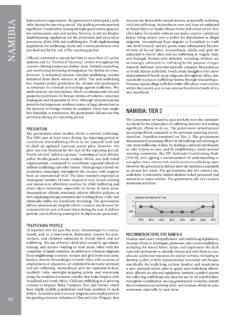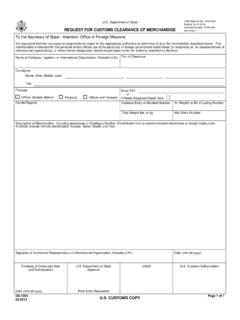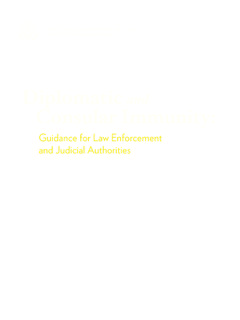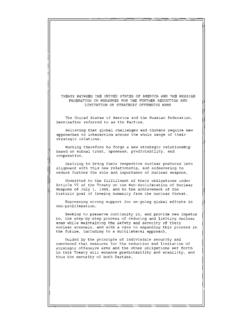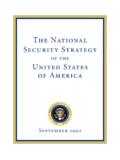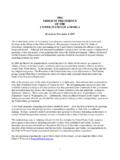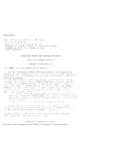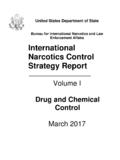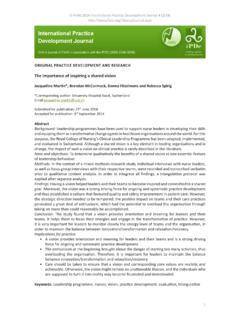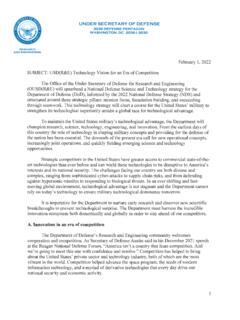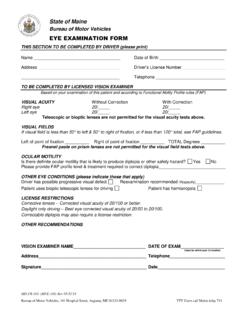Transcription of A FREE AND OPEN INDO-PACIFIC - United States …
1 Advancing a shared VisionA FREE AND OPEN INDO-PACIFICNOVEMBER 4, 2019 This page intentionally left FREE AND OPEN INDO-PACIFIC Advancing a shared VisionNOVEMBER 4, 2019 President Donald J. Trump has made engagement in the INDO-PACIFIC region a top priority of his Administration. In November 2017 in Vietnam, he outlined a vision for a free and open INDO-PACIFIC in which all countries prosper side by side as sovereign, independent States . That vision , shared with billions of people in more than 35 countries and economies, is based on values that have underpinned peace and prosperity in the INDO-PACIFIC for generations. Free, fair, and reciprocal trade, open investment environments, good governance, and freedom of the seas are goals shared by all who wish to prosper in a free and open future.
2 This report describes how the United States is working with allies and partners to implement our shared vision : The United States remains deeply engaged in the INDO-PACIFIC region and committed to its prosperity. With $ trillion in two-way trade, our futures are inextricably intertwined. government agencies, businesses, and institutions are spurring private sector investment and gainful employment in infrastructure, energy, and the digital economy, strengthening civil society and democratic institutions, countering transnational threats, and investing in human capital across the INDO-PACIFIC . The United States , our allies, and our partners are at the forefront of preserving the free and open regional order. All nations have a shared responsibility to uphold the rules and values that underpin a free and open INDO-PACIFIC .
3 We are increasing the tempo and scope of our work with allies, partners, and regional institutions such as the Association of Southeast Asian Nations (ASEAN), the Mekong States , the pacific Island countries, and our strategic partner India to address shared challenges and advance a shared vision . The United States INDO-PACIFIC strategy is driving a tangible increase in resources devoted to the INDO-PACIFIC region. Since the start of the Trump Administration, the Department of State and the Agency for International Development (USAID) have provided the region with over $ billion in foreign assistance. This has been augmented by hundreds of billions more in development financing, investment by firms, and other sources. We are investing new resources, launching new programs, and building new partnerships to ensure a safe, prosperous, and dynamic future for the am pleased to share this implementation update on our INDO-PACIFIC strategy, and to note that our work has just begun.
4 As President Trump said in November 2017: We have been friends, partners, and allies in the INDO-PACIFIC for a long, long time, and we will be friends, partners, and allies for a long time to come. Michael R. Pompeo Secretary of State4A MESSAGE FROM THE SECRETARY5A FREE AND OPEN INDO-PACIFIC : ADVANCING A shared VISIONThe United States is and always will be an INDO-PACIFIC nation. From our first trading ships that departed for Canton just after the American Revolution to our first consular presence in Kolkata in 1794, engagement in the INDO-PACIFIC is a story of trade, exchange, shared sacrifice, and mutual benefit. In recent decades, the INDO-PACIFIC has undergone a remarkable transformation. As hundreds of millions of people climbed out of poverty, the region has become home to world-class companies and an important engine of global economic growth.
5 This transformation was possible because a free and open regional order ensured stability and a level playing field on which countries could grow and prosper as sovereign, independent , INDO-PACIFIC nations face unprecedented challenges to their sovereignty, prosperity, and peace. The National Security Strategy, released in December 2017, recognizes that the most consequential challenge to and partner interests is the growing competition between free and repressive visions of the future international order. Authoritarian revisionist powers seek to advance their parochial interests at others expense. We are committed to upholding a free and open INDO-PACIFIC in which all nations, large and small, are secure in their sovereignty and able to pursue economic growth consistent with international law and principles of fair competition.
6 We will compete vigorously against attempts to limit the autonomy and freedom of choice of INDO-PACIFIC nations. Competition, however, is not conflict. Rather, it can prevent conflict and elevate the performance of all. The United States and our partners believe that the best way to prevent conflict is to reinforce the values that supported the INDO-PACIFIC region s remarkable progress.[T]his entire region has emerged and it is still emerging as a beautiful constellation of nations, each its own bright star, satellites to none and each one, a people, a culture, a way of life, and a Donald Trump November 10, 2017A shared Secretary of State Michael R. Pompeo reaffirmed dedication to ASEAN during the ASEAN Regional Forum Ministerial in Bangkok, Thailand, on August 2, 2019.
7 (Credit: Department of State)6A FREE AND OPEN INDO-PACIFIC : ADVANCING A shared VISIONWe have a fundamental interest in ensuring that the future of the INDO-PACIFIC is one of freedom and openness rather than coercion and corruption. The United States is the largest source of foreign direct investment (FDI) in the INDO-PACIFIC . In 2018, we conducted over $ trillion in two-way trade with the region, supporting more than 3 million jobs in the United States and million jobs in the INDO-PACIFIC . All five of our non-NATO bilateral defense alliances are in the INDO-PACIFIC . We are also the largest donor of foreign assistance in the region, contributing $2 trillion in constant dollars since the end of World War President Trump s leadership, the United States is implementing a whole-of-government strategyi to champion the values that have served the INDO-PACIFIC so well: (1) respect for sovereignty and independence of all nations; (2) peaceful resolution of disputes; (3) free, fair, and reciprocal trade based on open investment, transparent agreements, and connectivity; and (4) adherence to international law, including freedom of navigation and vision for the INDO-PACIFIC excludes no nation.
8 We do not ask countries to choose between one partner or another. Instead, we ask that they uphold the core principles of the regional order at a time when these principles are under renewed threat. The United States is strengthening and deepening partnerships with countries that share our values. Our alliances with Australia, Japan, the Republic of Korea, the Philippines, and Thailand have helped sustain peace and security for generations. ASEAN sits at the geographical center of the INDO-PACIFIC and is central to our vision . Our strategic partnership with India, a fellow democracy of billion people that shares our vision for the INDO-PACIFIC , is reaching new heights. We are joining with the Mekong States , pacific Island countries, South Asian nations, Taiwan, and many others to face emerging challenges.
9 In September 2019, the first ministerial-level meeting of the United States , Australia, India, and Japan at the Quadrilateral Consultations marked a new milestone for our diplomatic engagement in the region. This report describes our engagement in the INDO-PACIFIC and our commitment to its future prosperity. It highlights tangible resources directed to the region with support from the United States Congress, and it notes specific steps we have taken alongside allies and partners to realize our vision since the start of the Trump Administration. What I call the Free and Open INDO-PACIFIC Strategy derives from our desire to preserve the blessings of open seas, together with these very countries, as well as the United States , Australia, India, and others, and indeed, all countries and peoples who share the same Minister of Japan Shinzo Abe September 25, 2018 Crowds await President Donald J.
10 Trump, following his meetings in Hanoi with Nguyen Xuan Phuc, Prime Minister of the Socialist Republic of Vietnam, an important INDO-PACIFIC partner. February 27, 2019. (Credit: White House)7A FREE AND OPEN INDO-PACIFIC : ADVANCING A shared VISIONE ngaging Partners and Regional InstitutionsPresident Trump and Japan s Prime Minister Shinzo Abe leave the Akasaka Palace on May 27, 2019, following their afternoon of meetings on INDO-PACIFIC cooperation and the enduring alliance. (Credit: White House)Since the end of World War II, the network of alliances and partnerships has been at the core of a stable and peaceful INDO-PACIFIC . No country can shape the future of the region in isolation, and no vision for the region is complete without a robust network of sovereign countries cooperating to secure their collective interests.

